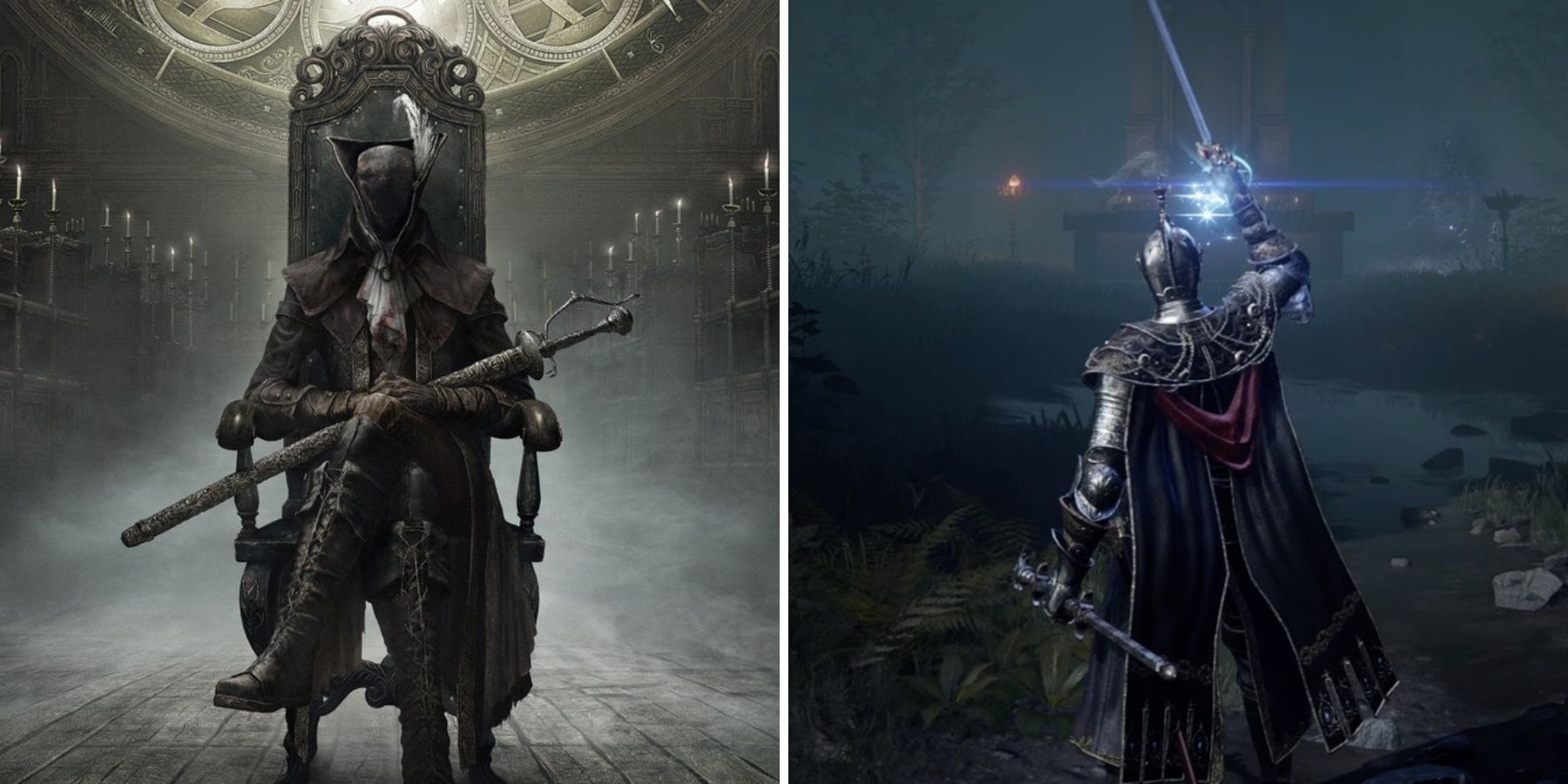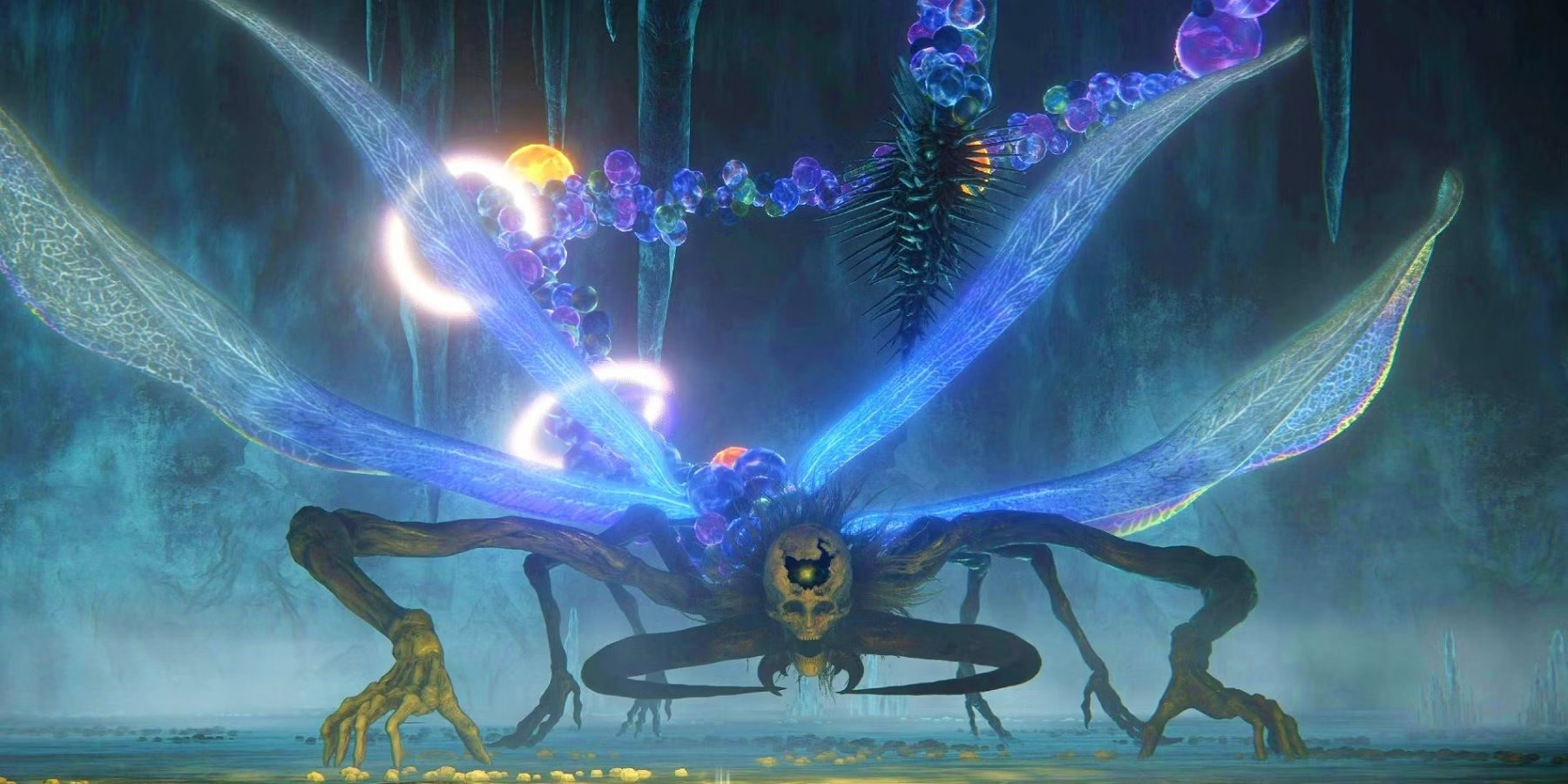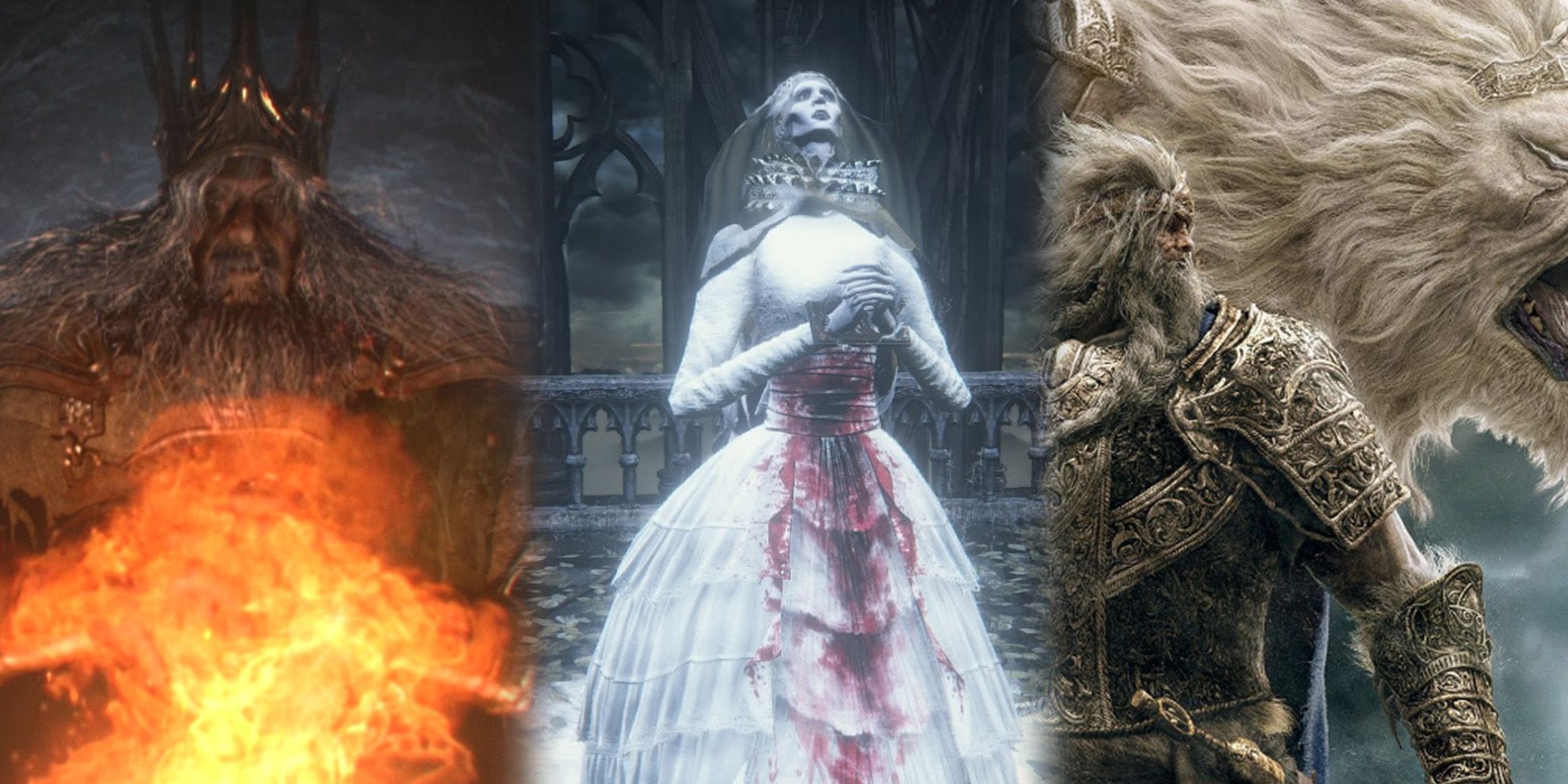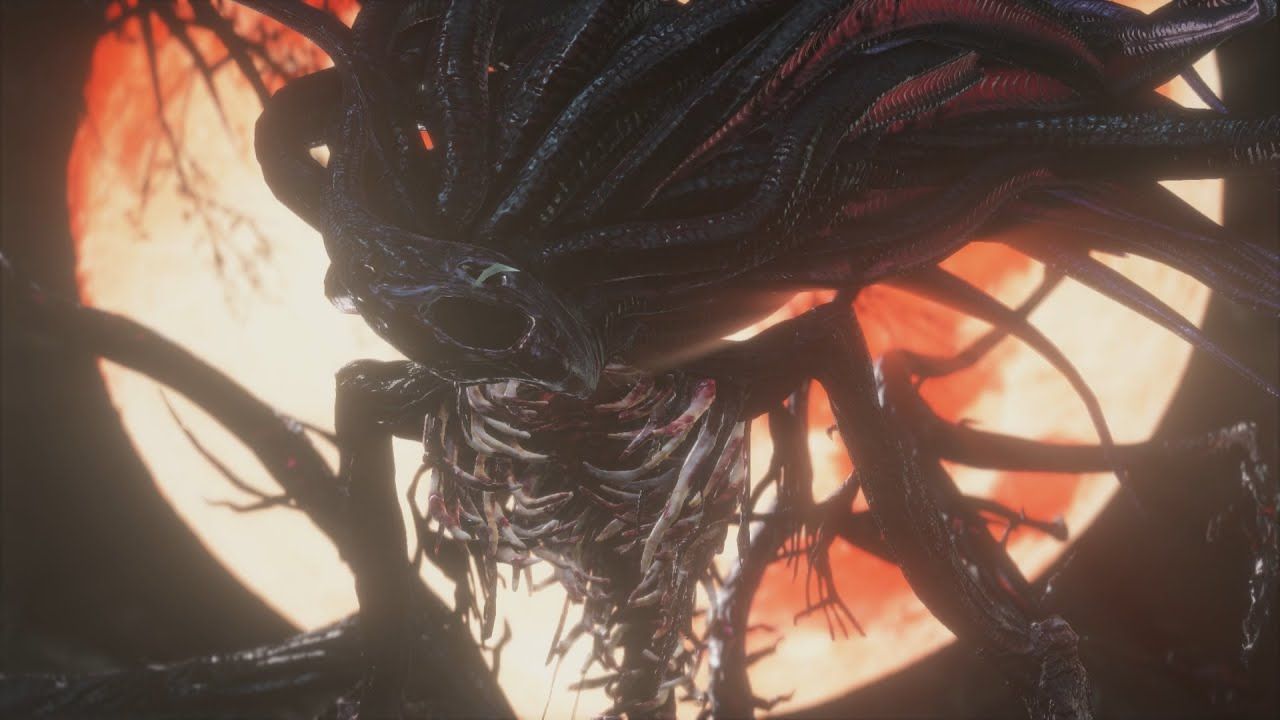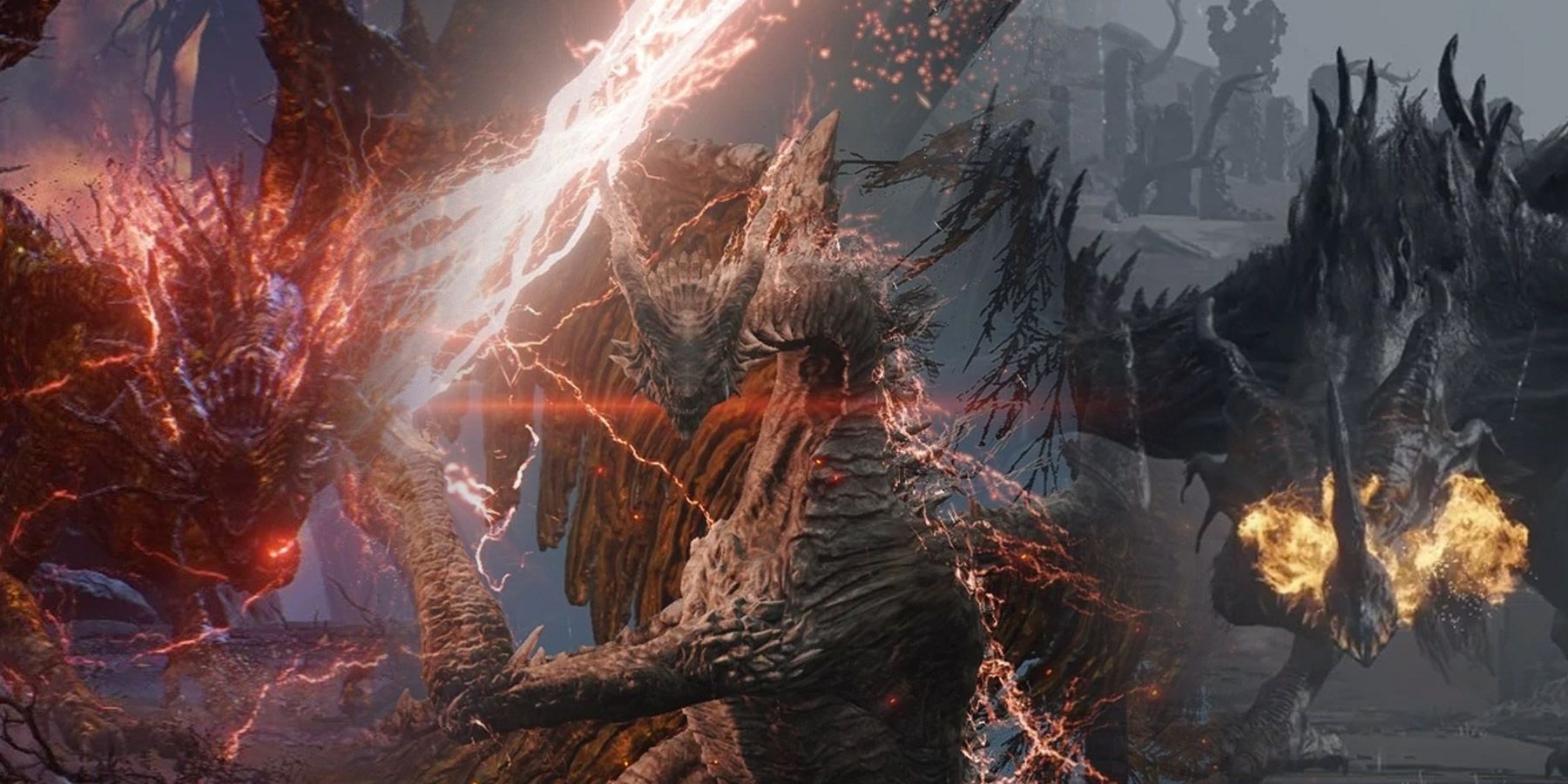The release of FromSoftware’s Bloodborne marked a significant aesthetic transition away from the studio’s previous three medieval fantasy-inspired games, Demon’s Souls, Dark Souls, and Dark Souls 2. The Victorian aesthetic and urban level design of Bloodborne offered players a refreshing, albeit terrifying, environment to play through while simultaneously flexing the studio’s willingness to explore unique game design. More recently, Elden Ring has reconfirmed FromSoftware’s willingness to rethink gameplay and world design by incorporating a massive open world into the trademark medieval fantasy aesthetic of previous Souls games.
While the aesthetic differences between Bloodborne and Elden Ring may make them an odd comparison, the lore beneath the surface suggests the two games have more in common with each other than it initially appears. Taking a deeper look at the similarities and differences at the core of Bloodborne and Elden Ring helps reveal the thematic threads revisited and reimagined by FromSoftware, offering new ways to engage with the studio’s rich and creative catalog of games.
The Way Bloodborne and Elden Ring’s Lore Is Told Is Very Different
FromSoftware is famous for withholding its lore, encouraging players instead to dig through item descriptions, exhaust NPC dialogue, and fill in the narrative gaps on their own to really piece the story together. The lore of Bloodborne and Elden Ring both maintain this conservative approach to storytelling, but certainly not to the same degree. Elden Ring was developed in collaboration with George R. R. Martin, marking the first time FromSoftware has openly outsourced its world-building. Taking Martin’s mythology and twisting it into a misshapen echo of its former self is really at the narrative foundation of Elden Ring. Although the lore may be harder to extract than most triple-A games, it is certainly more on display than the studio’s previous games.
Bloodborne is perhaps the best example of conservative storytelling in all FromSoftware games. Players would be forgiven for making their way to the end of the game and being just as, if not more, confused than they were when first stepping into Central Yharnam. In fact, Gehrman, the first hunter, tells players not to “think too hard about all of this. Just go out and kill a few beasts.” Bloodborne guards its story tightly and even dedicated lore miners are forced to fill in the gaps between details, leading to different and sometimes incompatible interpretations of the story. The much more implicit storytelling of Bloodborne contrasts heavily with Elden Ring’s open, though still relatively guarded, lore. However, the contents of the lore in both games does reveal some key similarities and differences.
The Gods and Deities Are More Similar Than They Seem
Bloodborne takes inspiration from the mythos of H.P. Lovecraft by exploring themes of cosmic horror. The game’s Great Ones, akin to Lovecraft’s Elder Gods, are otherworldy beings beyond human comprehension. This ambiguity suits FromSoftware’s storytelling particularly well, as the studio is known for holding back details about its lore. The Great Ones in Bloodborne resist over-examination and rely on a kind of narrative intangibility that, more than anything else, produces the effects of horrifying fascination.
While the Great Ones in Bloodborne are more explicitly referential to the Elder Gods of Lovecraftian horror, Elden Ring’s lore also gets some inspiration from the genre. The Outer Gods in Elden Ring are largely unexplained and, similarly to Bloodborne, rely on a degree of ambiguity to create its intended effect. The Greater Will, Frenzied Flame, Formless Mother, and God of Rot, among several others, are all members of this class called the Outer Gods. Although their relationships to one another and exact origins are only sparsely explained, their influence on the Lands Between plays a primary role in nearly all aspects of Elden Ring’s lore.
The Impact Deities Have on Their Worlds Underline Key Differences
The main driving force behind the bulk of Bloodborne's lore is the desire of Yharnam’s elite to transcend their humanity and commune with the Great Ones. Many players have offered different interpretations concerning the nature of these beings and which figures in the game are true or pseudo-Great Ones. The Moon Presence, Ebrietas, Kos, Amygdala, and Mergo’s Wet Nurse are only a few of the true Great Ones that players encounter, to some degree, in the game. However, other figures like the Celestial Emissaries, the One Reborn, and Rom the Vacuous Spider are not unanimously agreed to be true Great Ones.
Although the details of what makes a being a true Great One don’t have an enormous effect on the lore, they do highlight an important difference between the Great Ones of Bloodborne and the Outer Gods of Elden Ring. Namely, the Outer Gods of Elden Ring do not offer citizens of the Lands Between the chance of transcendence. Although Empyreans like Marika, Ranni, Miquella, and Malenia can become gods, they are never kin of the Outer Gods, more so vessels for them to act on the Lands Between.
Although both Elden Ring and Bloodborne contain similarities in the figures of the Outer Gods and Great Ones, respectively, their roles in their game’s lore are much different. The ability of players to become a Great One in Bloodborne makes the boundaries of power permeable and unfixed. In Elden Ring, however, the Outer Gods act on the world and its beings with no chance to become one with them. The hierarchies of power are much more fixed in Elden Ring than they are in Bloodborne, and while this may suggest the lore of Bloodborne offers more optimism to players to transcend humanity, the game is actually much less hopeful than Elden Ring.
The Lore of Bloodborne Leaves Little Room for Hope, Whereas Elden Ring Encourages Ambition
In Elden Ring, the main objective is to become Elden Lord. Although players must fight their way through The Lands Between, the scourge of beasts in Bloodborne has rendered the world violently inhospitable. Through the practice of blood ministration, the Yharnamites have regressed into monstrous beasts purposelessly driven towards killing. In Elden Ring, however, the players assume the role of a tarnished divested of grace and therefore heretical to the Erdtree and Greater Will. The main antagonism in Elden Ring originates from a principled protection of the Greater Will, whereas in Bloodborne the violence stems simply from beastly bloodlust.
The lore of Bloodborne and Elden Ring hint at larger preoccupations with despair and hope, respectively. These themes are not unique to just these two games. They can be found, at least to some degree, in all Soulsborne titles. FromSoftware’s interest in these ideas inevitably respond to and build off one another, and although the studio’s games may at times seem to vary greatly in aesthetics, lore, and even gameplay, the themes they explore beneath the surface piece together in unique and thoughtful ways.
Bloodborne is available now for PS4.




